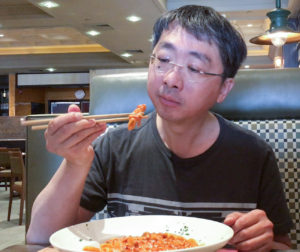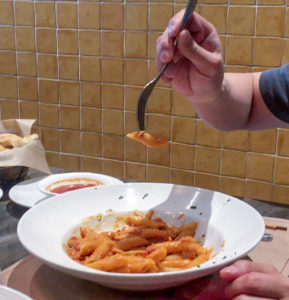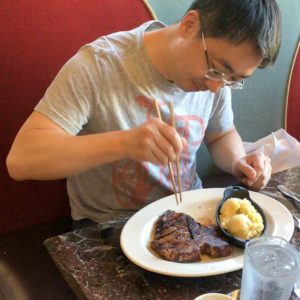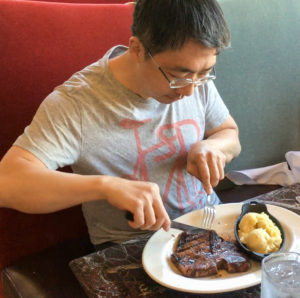Last Updated on February 25, 2021 by Staff
What is Utensil Equality?
The following two pictures illustrate eating-utensil equality.
When you ask your waiter for an alternative utensil that works better for the food you are served, and you don’t get a blank stare from your waiter, you know utensil equality holds. For instance, you find yourself struggling to eat farfalle (bow-tie pasta) with a fork. You ask for a spoon to better pick them up with sauce. If your waiter refuses, then you know that utensil equality does not hold at this place. Yet another example concerns penne and related short pastas such as macaroni and conchiglie. If you ask for a pair of chopsticks to better pick these up, and you get a blank stare, then you know that utensil equality is not honored at this place.
When fine dining restaurants around the world bring food to your table with the best utensil for the job, then utensil equality is universally-recognized. For instance, you order a T-bone steak, and your waiter brings you a pair of chopsticks. You know that they don’t have your best interests at heart, and just want to perpetuate their own utensil preference. On the other hand, your waiter takes away your dinner knife before bringing out your steak, and replaces it with a steak knife. Then you know they understand that all utensils are equal, and that the right tool should be offered for the right food.
We do not yet live in a world where utensil equality holds. And that is where you come in. Join us in our mission to bring utensil equality to all. Here at this organization, we do our small part by focusing on the marcosticks. But you can focus on other eating utensils, if that is where your interests lie. We are an equal opportunity organization. All eating utensils are welcome. Non-eating utensils, too.
Demand that your favorite restaurants carry marcosticks (read: chopsticks). Until they do, bring your own for enhanced dining experience, courtesy of Marco Polo.
Contribute your pictures to #utensilequality.







